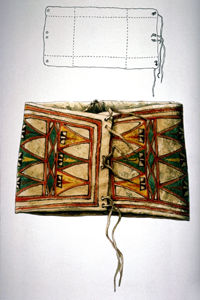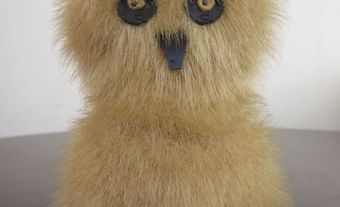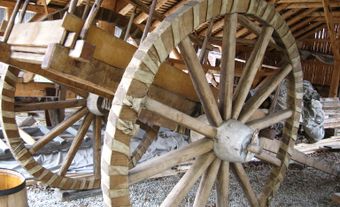Parfleche (also parflêche) are containers made of rawhide that were used by a variety of Plains Indigenous peoples to carry their personal belongings during hunting trips or while migrating from one location to another. Rawhide was also used to create drumheads, tipi covers, robes, the soles of moccasins and other belongings. Colourful and beautifully decorated, parfleche is considered as much a piece of art as it was a practical tool.
What is Parfleche?
Parfleche is a single piece of prepared hide that folds much like an envelope for the storage of dried meat (pemmican) and other food. Saddlebags, tubular headdress containers and small pouches for personal belongings were also all made of light, durable rawhide and were often colourful, painted or decorated withquillwork and featuring geometric designs.
Stiff and durable, the untanned skin of parfleche could also be used as a shield to protect against an enemy’s arrow. The word itself demonstrates this function: the first part of the word, “par,” comes from the French Canadian verb parer, “to ward off,” and the second part, flèche, means “arrow.”
How was Parfleche Made?
Plains Indigenous peoplesprepared parfleche by first soaking the hide in water and then cleaning it. The skin was scraped with a bone knife or similar tool in order for it to achieve a uniform thickness. The Indigenous peoples stretched out the skin, pinning it to the ground and leaving it out to dry. After this step, the hide was formed into the desired shape.
Women painted or sewed patterns onto the hide that reflected their heritage or the personal identity of the parfleche’s owner. Painted designs had to be completed while the rawhide was damp so that the pigment could be absorbed into the skin.
Preserving Indigenous Culture
While parfleche is no longer in everyday use, it remains an important part of Indigenous art and culture. Some elders and artists actively seek to pass on the art of Indigenous craftsmanship to the next generation, while also teaching non-Indigenous peoples about Indigenous traditions.
Museums and art galleries across North America and other parts of the world preserve parfleche made before Western settlement, while others exhibit the modern parfleche art of various Indigenous artists.

 Share on Facebook
Share on Facebook Share on X
Share on X Share by Email
Share by Email Share on Google Classroom
Share on Google Classroom










